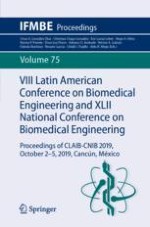2020 | OriginalPaper | Buchkapitel
Cortical Auditory Evoked Potentials Elicited by Spanish Words: An Equivalent Current Dipoles Clustering Study
verfasst von : Norma Castañeda-Villa, Pilar Granados-Trejo, Juan Manuel Cornejo-Cruz
Erschienen in: VIII Latin American Conference on Biomedical Engineering and XLII National Conference on Biomedical Engineering
Aktivieren Sie unsere intelligente Suche, um passende Fachinhalte oder Patente zu finden.
Wählen Sie Textabschnitte aus um mit Künstlicher Intelligenz passenden Patente zu finden. powered by
Markieren Sie Textabschnitte, um KI-gestützt weitere passende Inhalte zu finden. powered by
